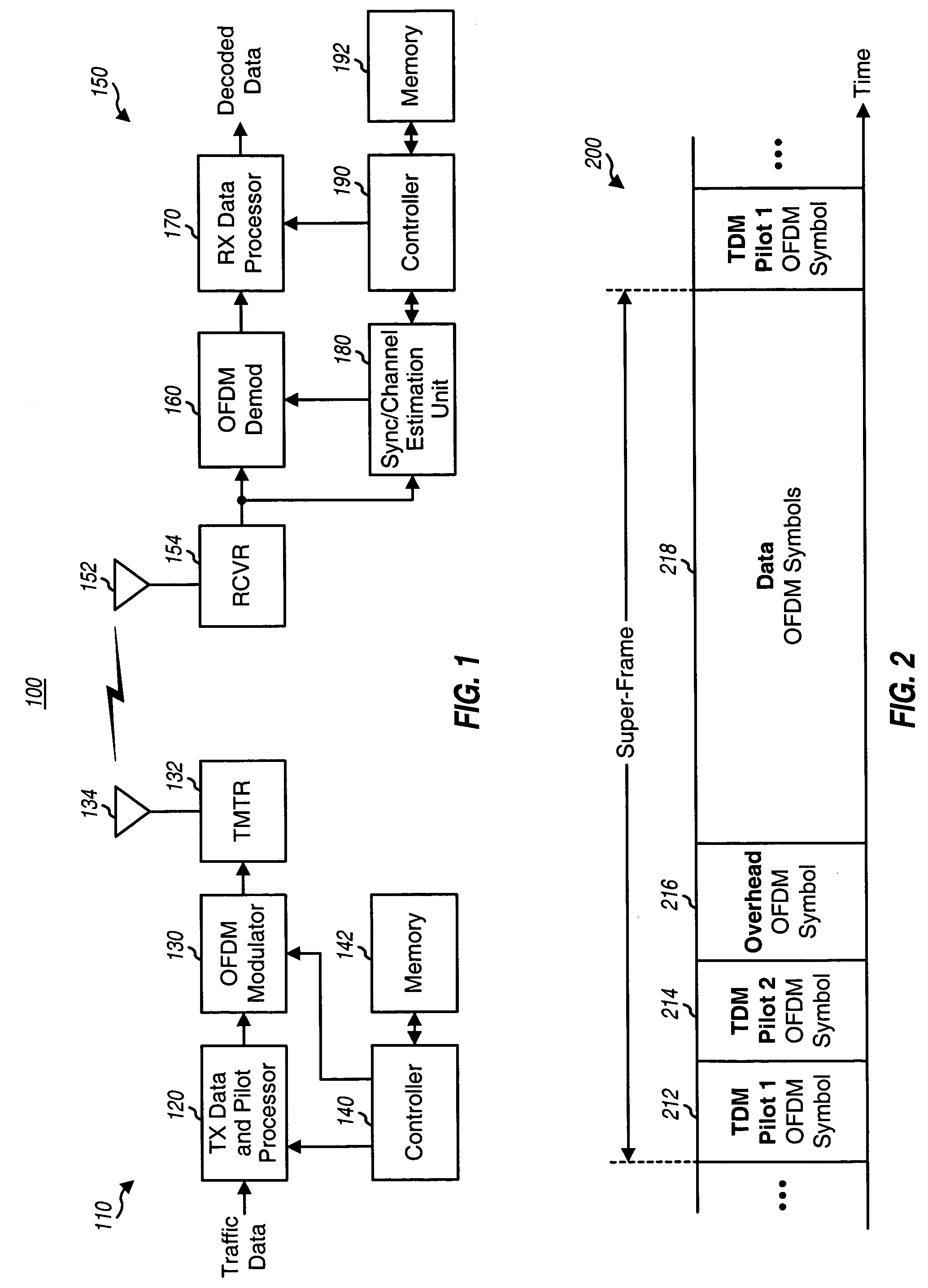Synchronization in a broadcast OFDM system using time division multiplexed pilots
a technology of time division and multiplexing, applied in the field of data communication, can solve the problem that the receiver also consumes resources to perform synchronization, and achieve the effect of more accurate channel estimation
- Summary
- Abstract
- Description
- Claims
- Application Information
AI Technical Summary
Benefits of technology
Problems solved by technology
Method used
Image
Examples
Embodiment Construction
The word “exemplary” is used herein to mean “serving as an example, instance, or illustration.” Any embodiment or design described herein as “exemplary” is not necessarily to be construed as preferred or advantageous over other embodiments or designs.
The synchronization techniques described herein may be used for various multi-carrier systems and for the downlink as well as the uplink. The downlink (or forward link) refers to the communication link from the base stations to the wireless devices, and the uplink (or reverse link) refers to the communication link from the wireless devices to the base stations. For clarity, these techniques are described below for the downlink in an OFDM system.
FIG. 1 shows a block diagram of a base station 110 and a wireless device 150 in an OFDM system 100. Base station 110 is generally a fixed station and may also be referred to as a base transceiver system (BTS), an access point, or some other terminology. Wireless device 150 may be fixed or mob...
PUM
 Login to View More
Login to View More Abstract
Description
Claims
Application Information
 Login to View More
Login to View More - R&D
- Intellectual Property
- Life Sciences
- Materials
- Tech Scout
- Unparalleled Data Quality
- Higher Quality Content
- 60% Fewer Hallucinations
Browse by: Latest US Patents, China's latest patents, Technical Efficacy Thesaurus, Application Domain, Technology Topic, Popular Technical Reports.
© 2025 PatSnap. All rights reserved.Legal|Privacy policy|Modern Slavery Act Transparency Statement|Sitemap|About US| Contact US: help@patsnap.com



